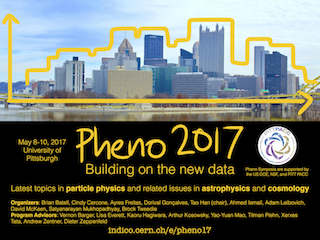Speaker
Description
Supersymmetry has not been observed thus far, which implies that SUSY scale is higher than it was expected before the LHC era. Further, the observation of the Higgs boson mass at $\sim 125$ GeV, implies that the loop correction to the Higgs mass in SUSY is sizable, which in turn also implies a large SUSY scale. An important contributing factor to the non-observation of SUSY is that in most models the large scale of SUSY implies that the neutralino is a Bino and thus one requires co-annihilation to achieve a relic density consistent with WMAP and PLANCK. However, co-annihilation also implies that the mass gap between the LSP and the NLSP is small and thus the final states arising from the decay of the NLSP are soft making the observation of SUSY at the LHC problematic. In this work we investigate the prospects for the discovery of supersymmetry at LHC RUN II in the stau coannihilation region extending the recent work on the stop and gluino coannihilation regions. Our analysis is within the framework of non-universal sugra models with nonuniversality in the gaugino sector. In the analysis we impose the relic density constraints as well as constraints of the Higgs boson mass.
We investigate a large variety of signal regions including those discussed by the ATLAS and the CMS Collaborations but optimized for our parameter space. We analyze the conventional two particle co-annihilation but extend the analysis to include multi-particle co-annihilation. It is found that the signal regions involving $\tau's$ rather than those involving $e,\mu$ are the dominant ones. We have generated benchmarks for the stau co-annihilation regions and give the range of sparticle masses discoverable at LHC RUN II with up to 3000 fb$^{-1}$ of integrated luminosity. The direct detection of neutralino dark matter is analyzed within the class of models investigated. It is found that the spin independent and spin dependent neutralino-proton cross sections lie near the edge of the next generation LUX-ZEPLIN experiments and significantly above the neutrino floor.
